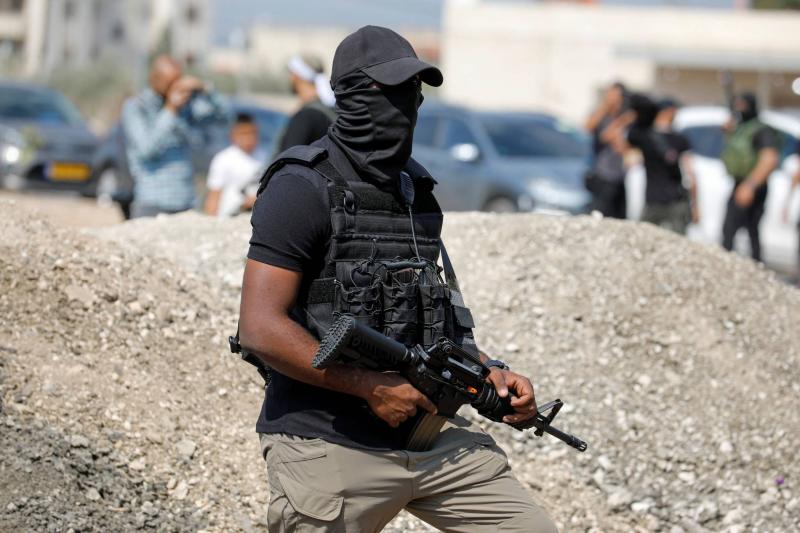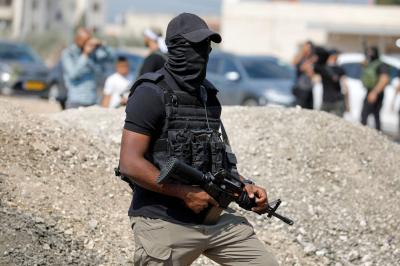A precisely designed campaign of deception surprised Israel when the Palestinian Islamic Resistance Movement (Hamas) launched its devastating attack, allowing a force using bulldozers, paragliders, and motorcycles to deliver a painful blow to the strongest army in the Middle East. The attack on Saturday followed a two-year deception during which Hamas kept its military plans secret and convinced Israel that it did not want to fight. This assault is the largest breach of Israel's defenses since the October War of 1973.
A source close to Hamas stated that while Israel believed it was successfully containing a weakened Hamas by providing economic incentives to workers from Gaza, Hamas fighters were training and honing their skills often in plain sight. This source provided extensive details regarding the attack on Israel and its escalation, which "Reuters" compiled in this story. Three sources within the Israeli security establishment, who, like others, requested anonymity, also contributed to this narrative.
The source close to Hamas said, "Hamas gave Israel the impression that it was not ready for combat," describing plans related to carrying out the most terrifying attacks since the October War fifty years ago when Egypt and Syria surprised Israel and forced it to fight for its survival.
**Intelligence Style**
The source mentioned, "Hamas relied on an unprecedented intelligence method to mislead Israel during the past few months and gave the impression that it was not interested in entering a battle or confrontation with Israel, while at the same time preparing for this massive operation." Israel acknowledges that the attack did indeed take it by surprise, especially since it occurred on a Saturday and coincided with a religious holiday. Hamas fighters infiltrated Israeli towns and settlements, resulting in the deaths of hundreds of Israelis and the capture of dozens so far. Israel, in retaliation, has killed hundreds of Palestinians and has been bombarding the Gaza Strip with rockets and shells since then, with thousands injured.
Israeli army spokesman Major Nir Dinar remarked, "This is September 11 for us... They managed to surprise us." He referred to the attacks on New York and Washington in 2001. He added, "They caught us off guard and came quickly from multiple locations... from the air, land, and sea."
**Settlement Model**
In one of the most astonishing aspects of the preparations, the source close to Hamas stated that the movement created a model similar to an Israeli settlement in Gaza to practice military landings and storming, and they even filmed videos of those exercises. At the same time, Hamas sought to convince Israel that all it cared about was providing work opportunities for workers in Gaza across the border and that it had no interest in starting a new war. More than two million people live in the densely populated Gaza Strip.
The source said, "Hamas was able to paint a complete picture that it was not ready to take a military adventure against Israel."
**Economy**
Since the war it fought in 2021 with Hamas, Israel has sought to provide a basic level of economic stability in the sector by offering incentives that included granting thousands of work permits for Gaza residents to work in Israel or the West Bank, where wages in construction, agriculture, and services can be almost ten times the minimum wage in Gaza.
Another Israeli army spokesperson stated, "We thought that their coming to work and bringing money back to Gaza would bring a certain level of calm. We were wrong." An Israeli security source acknowledged that Hamas deceived Israeli security agencies. The source said, "They made us believe they wanted money... and all along they were engaged in training until (the time) came to unleash chaos."
As part of its deceptions over the past two years, Hamas did not conduct any military operations against Israel, even as the Islamic Jihad movement, also based in the sector, launched a series of attacks and rocket strikes.
**Without Any Hint**
The source indicated that Hamas's reluctance to engage drew public criticism from some of its supporters, which was also aimed at creating the impression that Hamas had economic concerns and was not considering launching a new war. A second Israeli security source said that Israel believed for a while that the leader of the movement in Gaza, Yahya Sinwar, was completely preoccupied with managing the affairs of the sector "instead of killing Jews." He added that during this time, Israel shifted its focus away from Hamas towards normalizing relations with Saudi Arabia.
Israel has long bragged about its ability to infiltrate and monitor Islamic groups. As a result, the source close to Hamas said an important part of the plan involved avoiding leaks. The source added that several Hamas leaders were unaware of the attack plans, and even during training, the fighters who participated in the attack—about a thousand fighters—had no idea of the specific purpose of those exercises.
The source explained that the operation was divided into four parts when the time for the attack came, describing the various elements that constituted the operation.
**First Step**
The source indicated that the first step involved launching three thousand rockets from Gaza coinciding with the infiltration of fighters via automated paragliders, small vehicles carried by parachutes across the border. Israel had previously stated that the number of rockets launched from the sector at first was 2,500. Once the fighters who were using the paragliders landed, they secured the area for a commando unit to breach the fortified electronic wall made of cement that Israel built to prevent infiltration.
The fighters used explosives to breach the barriers and then rushed through on motorcycles. Bulldozers widened the gaps, allowing more fighters to enter with four-wheel-drive vehicles, scenes described by witnesses.
**"A Grave Failure"**
The source noted that the commando unit attacked the Israeli military's southern command headquarters and disrupted its communications, preventing individuals from contacting their leaders or communicating with each other. He continued, "The final part of the plan involved transferring the captives to Gaza, which largely occurred early in the attack."
In one notable hostage-taking incident widely covered by many media outlets, the attackers captured some attendees of a party while fleeing near Kibbutz Re'im close to Gaza. Footage circulated on social media showed dozens fleeing in fields and on roads, amid the sound of gunfire.
The Israeli security source questioned, "How could this party be organized so close to Gaza?" The Israeli security source stated that Israeli forces were not at full strength in the south near Gaza due to the redeployment of some of them in the West Bank to protect Israeli settlers following an escalation of violence between them and Palestinian militants. The source indicated that Hamas "exploited that."
A former Middle East negotiator who now works at the Washington Institute for Near East Policy mentioned that Israel was preoccupied with violence in the West Bank, leading to "a limited force lacking sufficient readiness in the south." He added, "Perhaps Hamas succeeded beyond its expectations. Now it will have to deal with an Israel determined to eliminate it."
Retired General Yaakov Amidror, former national security advisor to Prime Minister Benjamin Netanyahu, told reporters on Sunday that the attack is a "grave failure of the intelligence system and the military apparatus in the south." Amidror, who headed the National Security Council from April 2011 to November 2013 and is now a senior fellow at the Jerusalem Institute for Strategy and Security, stated that some of Israel's allies were saying that Hamas now has "greater responsibility." He added, "We started naively believing this was true... so we made a mistake. We will not make this mistake again, and we will slowly but surely destroy Hamas."




